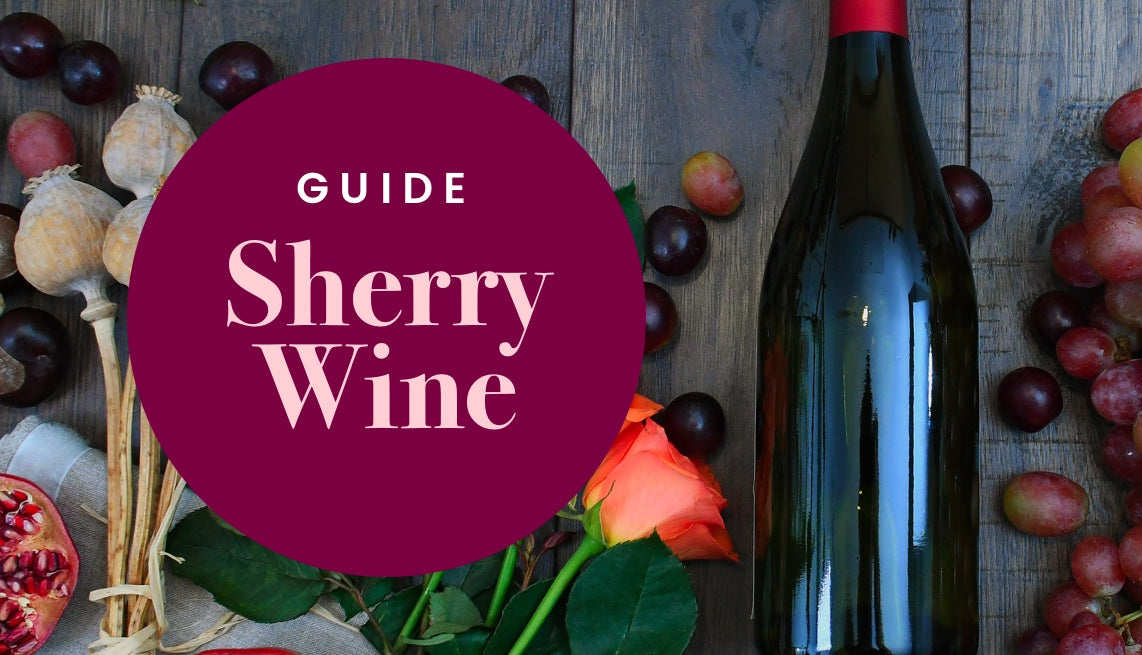
Everything you need to know about Sherry Wine
 Spain is known for a lot of things but one its greatest export is Sherry Wine. This fortified wine gives an interesting experience when taking, but there is a lot to be known about this particular wine. The wine is extremely to fall in love with, it has great taste and this is one the reason why it is a common feature on bartender menus nowadays.
Spain is known for a lot of things but one its greatest export is Sherry Wine. This fortified wine gives an interesting experience when taking, but there is a lot to be known about this particular wine. The wine is extremely to fall in love with, it has great taste and this is one the reason why it is a common feature on bartender menus nowadays.
There are lots of things to know about Sherry, in fact when you are done reading this, Sherry is all you going to want. Here is everything you need to know about Spain’s fortified Sherry Wine.
1. Origin
The best way to start any introduction is the origin of such product. The wine originates from Spain, but what part of Spain? A little town of Jerez is the home of this distilled grape spirit. If you are looking for it on the map of Spain, set your eyes towards the southwest area of the country.
The word ‘sherry’ itself was gotten from the town name. For a very long time in the town’s history, it was occupied by the Moors. Sherry is the Moorish translation for Jerez. Note that in some quarters, Jerez is known as Xeres.
2. Production Process
The wine is produced from a mix of white Palomino grapes and Pedro Ximenez grapes. There are several styles to which sherry wine is produced which is why you can see several varieties of the wine. There are light varieties of the drinks and also darker varieties of the drink – the difference in production style is responsible for this.
The wine is fermented and after the completion of this stage, grape spirit is added to the fermented wine. This is the fortified aspect of the wine which would raise the alcohol content of the wine. Initially, the wine was fortified so as to withstand long travel.
The wine is aged before bottling using a unique system called solera.
3. Protocol
You know how Champagne is to France and can only be produced in the regions with legal backing in the Champagne region of France? Well, same thing applies to Sherry. The wine may not be as reverend as the popular Champagne, it is a national treasure nonetheless.
And what do you do with national treasures? You give them legal powers so they don’t get carried off by European explorers like African treasures.
The production of Sherry is regulated by the Denomination of Origin System in Spain. This ensures that only a select regions can produce original Sherry wine and ensure a uniformity in quality by giving standards by following specific procedures.
The regulations also mandates aging of the wine using the aforementioned solera system.
4. Varities
As earlier stated, there are several varieties of sherry – both dry and sweet varieties are produced. People usually assume that all varieties of Sherry wine are sweet, this is very wrong. The dry Sherry wines like Amontillado and Fino are just as enjoyable and refreshing as the sweet ones.

For the dry varieties, the white palomino grapes are used for their production. These varieties are subjected to a thorough natural and biological process of aging in which a natural yeast is used. The resulting wine comes with reduced glycerol content and a taste of almonds. This is the characteristic taste of dry Sherry wines.
For the sweet, Muscatel and Ximenez white grapes are used for their production. Instead of natural aging, sweet Sherry go through a process of oxidative aging. This gives them their dark color and sweetness. Sweet sherry wines are the popular creamy and juicy ones we have all come to love over the years.
4. Sherry cocktails are great
Just like any wine, sherry works great when mixed with other ingredients. In fact, most people prefer their creamy friend mixed than sipping straight-up. The mixing of sherry is becoming something more of an art, with each mixologist coming with a new instant classic that topples the last. Sherry cocktails are a thing now, and they have come to stay.
Here are some of the most popular sherry cocktails you can easily order at any bar.
The Sherry Cobbler
The reason for this choice of name is disputed by people, but the effects of the drink is recognized by all and sundry. What do you need for a Sherry Cobbler? Simple, get yourself a bottle of dry sherry preferably Fino, at least two slices of orange, some seasonal berries and mint. Oh, you also need about 1 tablespoon of sugar.
A 19th century invention that is now taking its hold on the American nightlife scene.
Jerez Cocktail

From the name alone, you would know that this blend stays true to the Spanish roots of Sherry. The main ingredients for making this energetic cocktail are a bottle of peach brandy, some triple sec and of course your darling Dry Sherry, say Amontillado. There are lots of fruit notes to this cocktail and it is easy to see why. For the full effect of this blend, serve it with crushed ice. Easy to make, fruity and effective, enjoy your Jerez Cocktail.
The Bamboo
This is probably the most popular Sherry cocktail at the moment. It has everything that would interest, the history (it was first mixed in the 19th century) the level of sophistication, the richness and simplicity in mixing.
Ingredients for this masterpiece are a bottle of Dry Sherry wine (both Amontillado and Fino would work), same amount of floral vermouth, exactly one dash of Angostura Bitters and two dashes of orange bitters. For garnishing, use squeezed lemon.
Fino Sangria
The last Sherry cocktail on this guide is the Fino Sherry Sangria which comes with a salty flavor. The ingredients for making this unique drink are fresh plums, orange slices, tart and definitely Fino. Some orange liqueur wouldn’t hurt either.
Enjoy Sherry wine cocktails with any of our Shot Glasses Sets.


